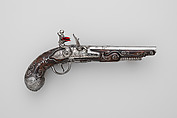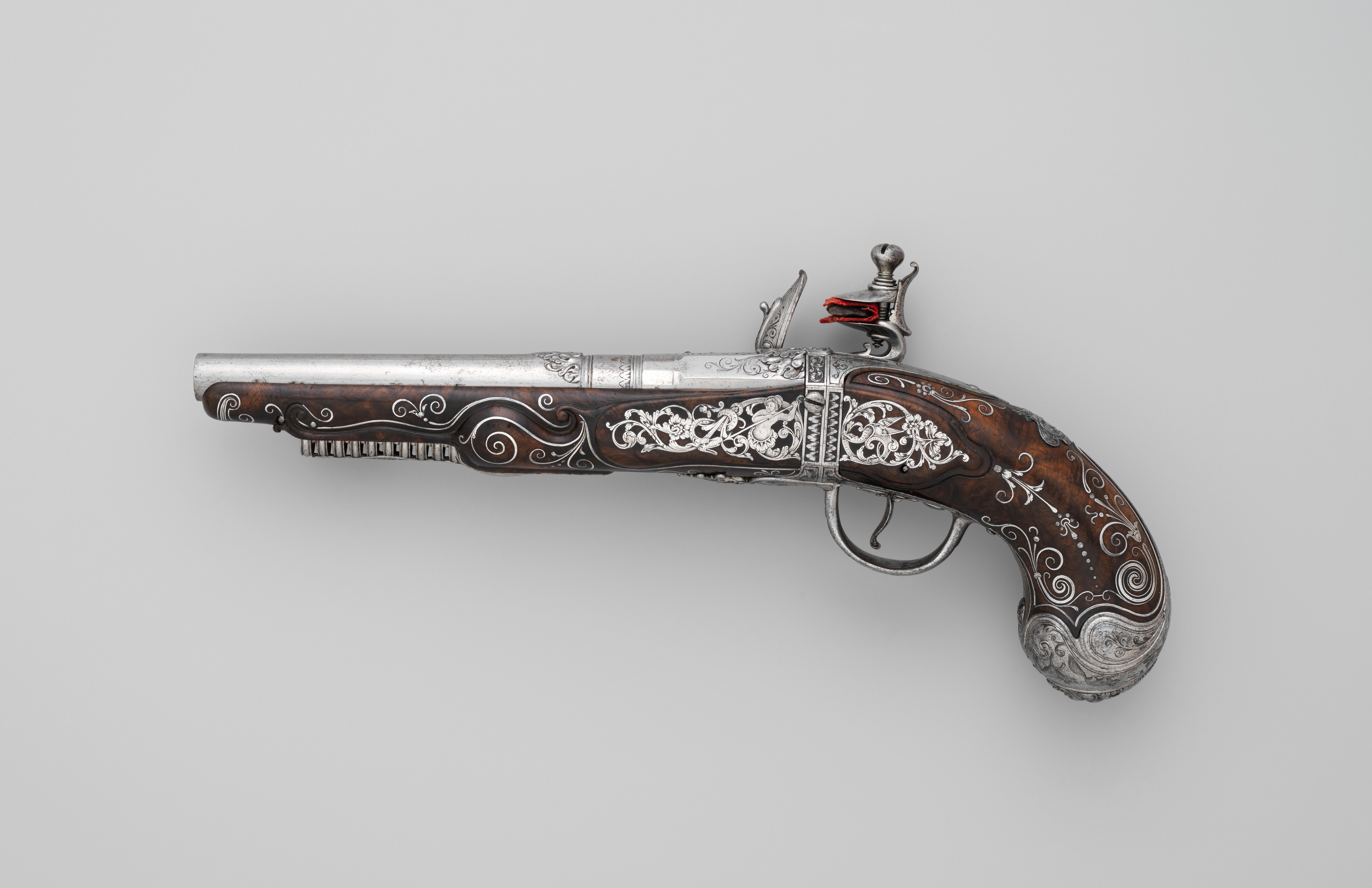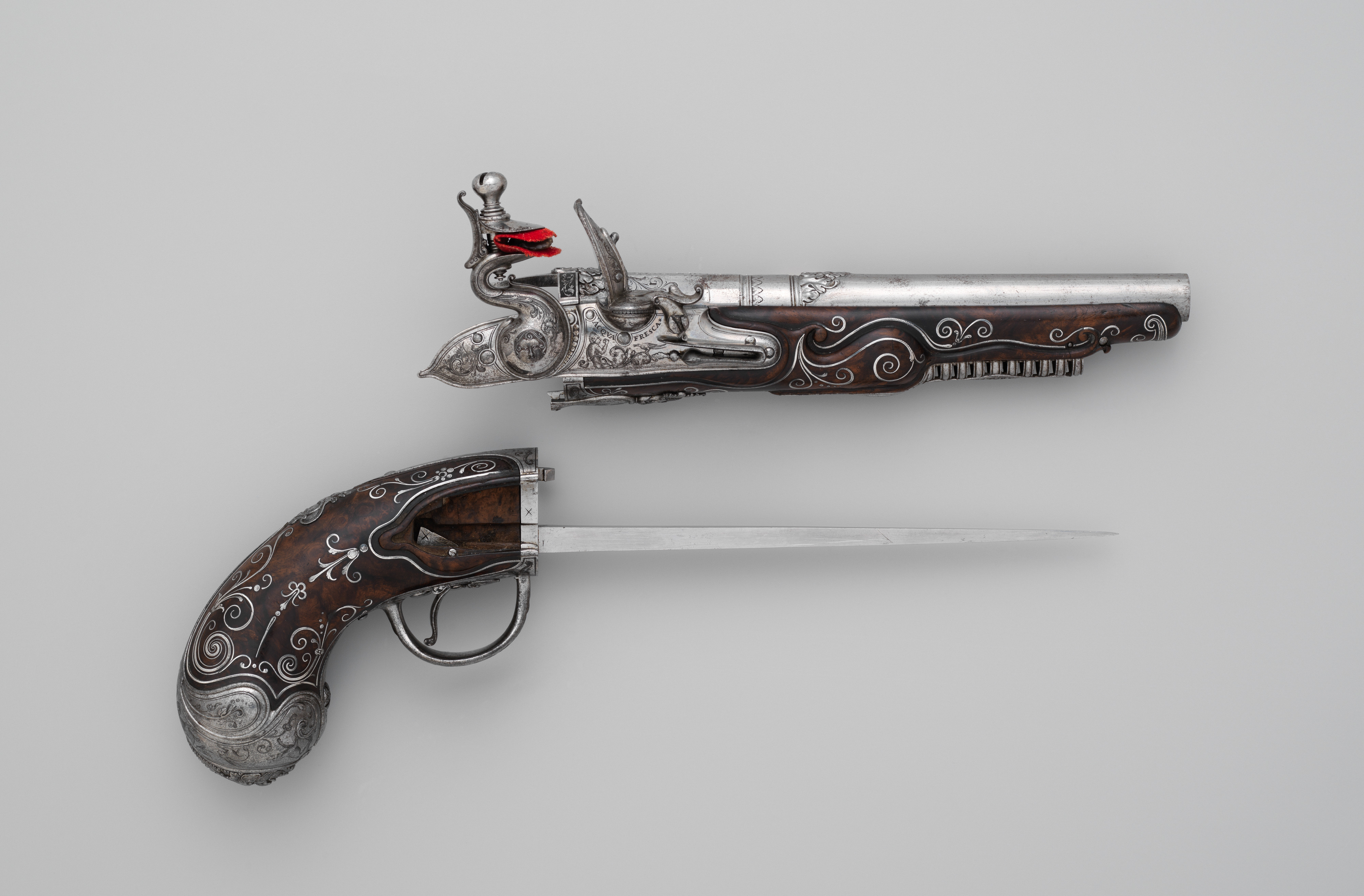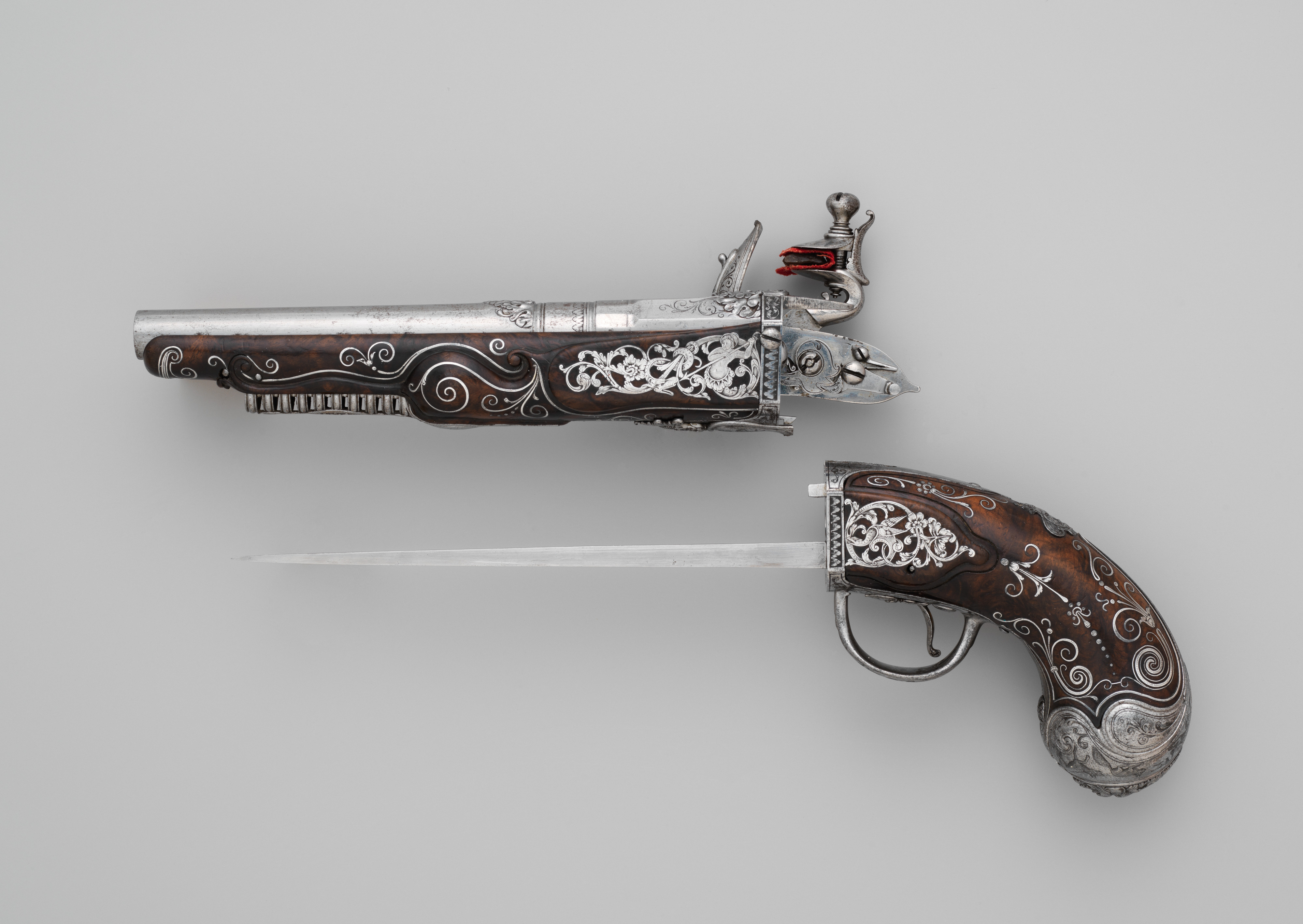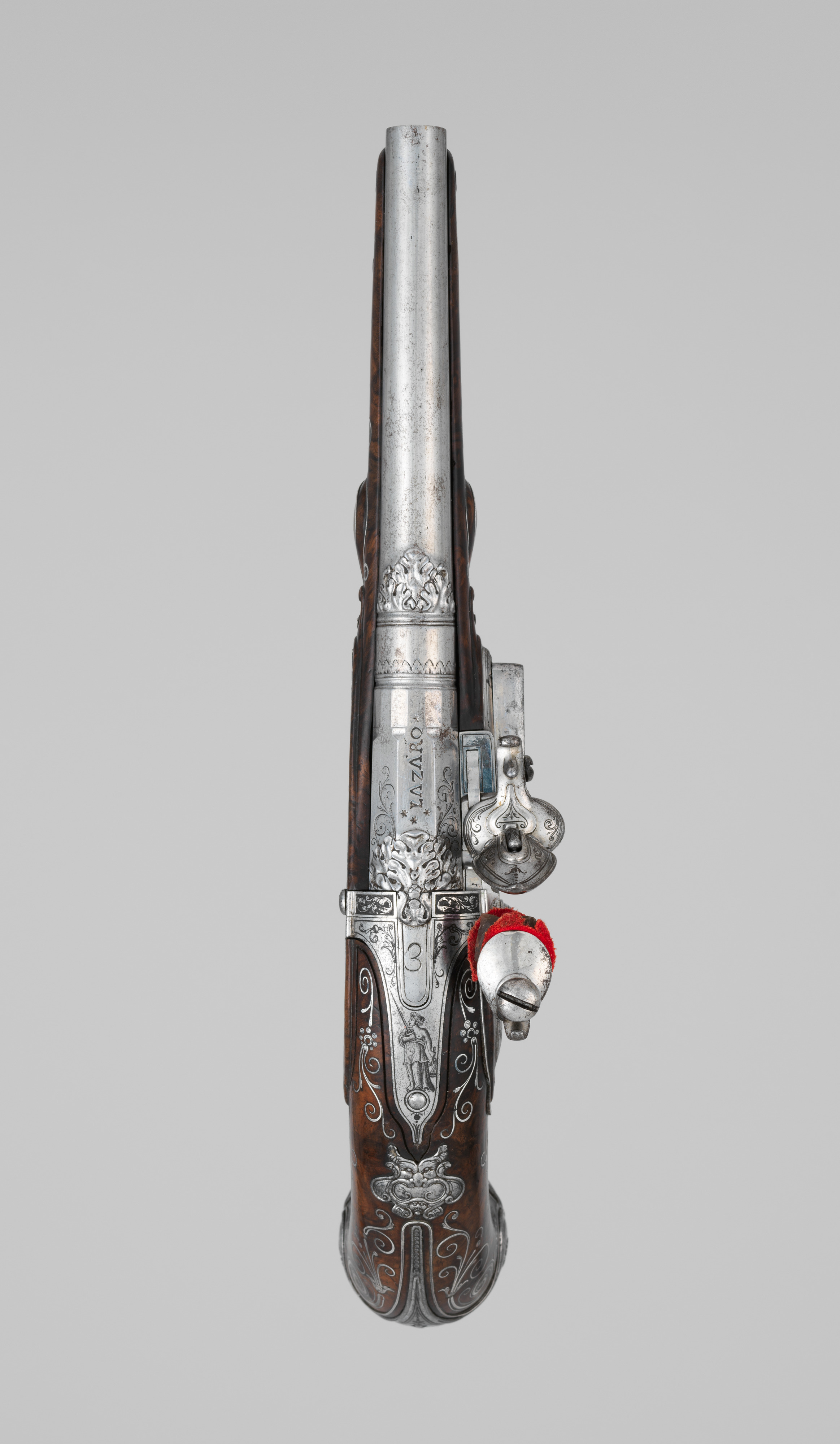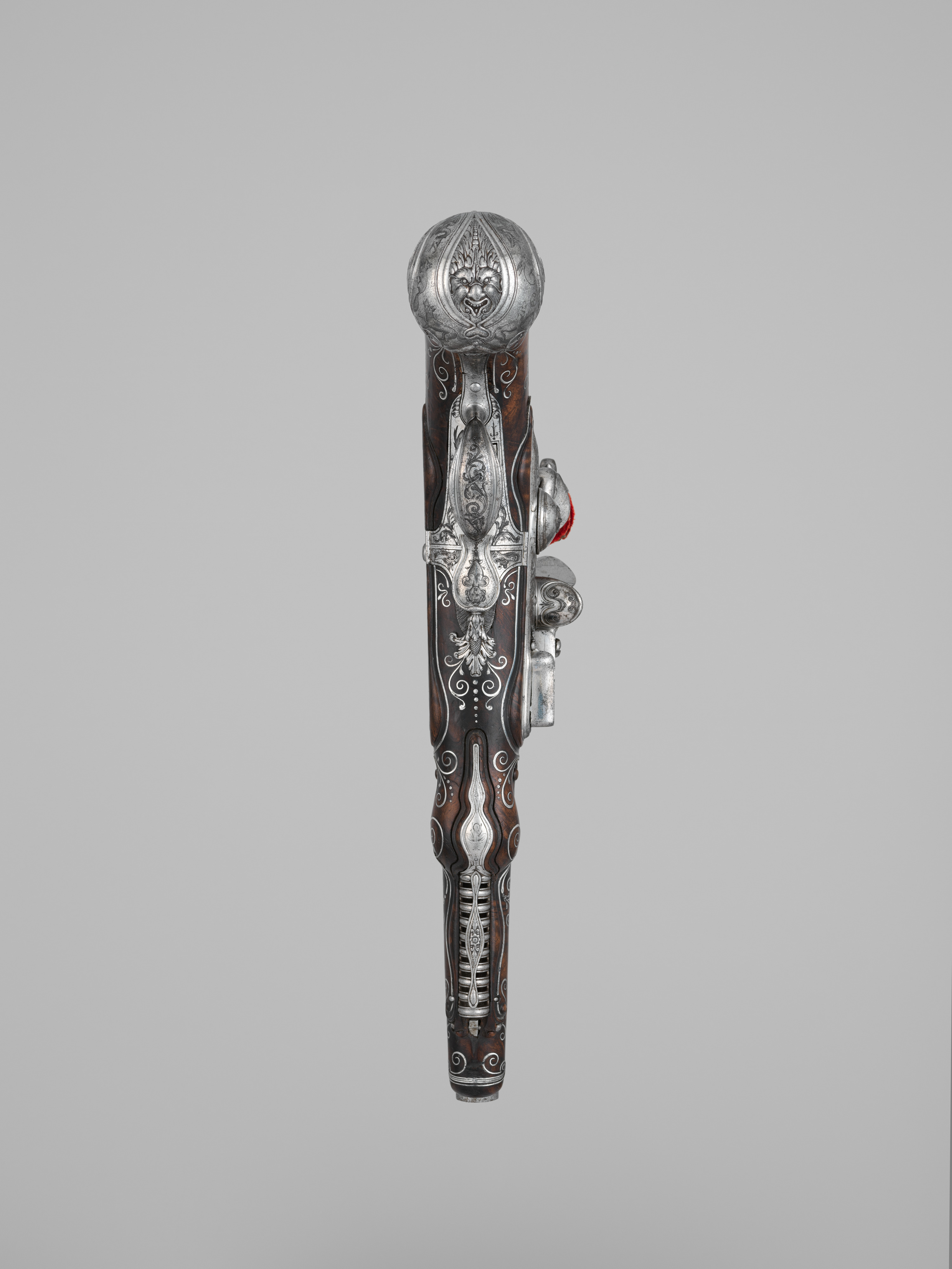Combination Flintlock Pistol and Concealed Dagger
Probably by Matteo Cecchi, called Acquafresca Italian
Not on view
This dagger-pistol, remarkable for its delicately chiseled and engraved steel mounts, elegant wire inlay, gracefully modeled stock, and novel design in which the blade is concealed within the stock, counts among the finest Italian combination weapons of the late seventeenth century. It was made by Matteo Cecchi, called Acquafresca (1651–1738) ca. 1690, the most gifted member of the famed Acquafresca family of gunmakers.
The Acquafresca family resided and worked in the mountain village of Bargi, located in the Tosco-Emilian Apennines between Florence and Bologna, over two-hundred kilometers from Brescia, where many of Italy’s most talented gunmakers concentrated for over two centuries. Despite their remote location, the Acquafresca gained the patronage of wealthy aristocratic families and the Medici court in Florence, earning reputations as the finest gunmakers in Italy. Sebastiano Acquafresca (1619–1692), the earliest known member of the family, had five sons, Matteo, Pietro, Stefano, Antonio, Guiseppe Maria, several of whom worked in the trade and likely often collaborated with one another.
Matteo was the eldest and most talented of Sebastiano’s sons. His work, identifiable by its combination of deft chiseling, fine engraving, and inventive, personal interpretations of contemporary Northern decorative trends, exhibits remarkable independence from traditional Brescian modes of decoration popular at that time, characterized by high-relief chiseled ornament and intricately pierced steel mounts.
A finely chiseled and engraved lock in The Metropolitan’s collection, dated 1679 and signed only with the surname "Acquafresca," as was typical for guns and locks made by all members of the family, was made by either Sebastiano or Matteo, and is the earliest dated piece by the Acquafresca (acc. no. 33.104).
The Museum’s dagger-pistol, signed "Acquafresca" on the lock-plate, may be solidly attributed to Matteo on the grounds of its chiseled and engraved decorations, the quality of which is consistent with a pair of snaphaunce pistols also in The Metropolitan’s collection signed "Matteo Acquafresca" on one of the barrels (acc. no. 2006.471.1, .2). The distinctively long ramrod pipes shared with the pair, too, are a trait of Matteo’s work. Aligning with Matteo’s consistent use of the latest Parisian pattern books, the lively animals, swirling tendrils and faces decorating the Museum’s three Acquafresca pistols link to prints published by Jean Berain (1640–1711) in 1659. The dagger-pistol’s decoration also echoes motifs found published by the engraver Claude Simonin (1635–1693) in 1684.
The pistol’s inventive construction, with a stiletto dagger hidden inside the stock and accessible by pushing upward on the trigger guard to release the forestock, speaks to Matteo’s ingenuity and apparent interest in the technical development of firearms.
The top of the barrel is stamped with the name LAZARO, which likely refers to a member of the famous Cominazzo family of barrel makers. An identically decorated dagger-pistol, of the same caliber and also numbered 3 on the tang, is in the Fitzwilliam Museum, Cambridge (acc. no. M1-1956) and is the likely mate to The Metropolitan’s pistol.
Due to rights restrictions, this image cannot be enlarged, viewed at full screen, or downloaded.
This artwork is meant to be viewed from right to left. Scroll left to view more.
